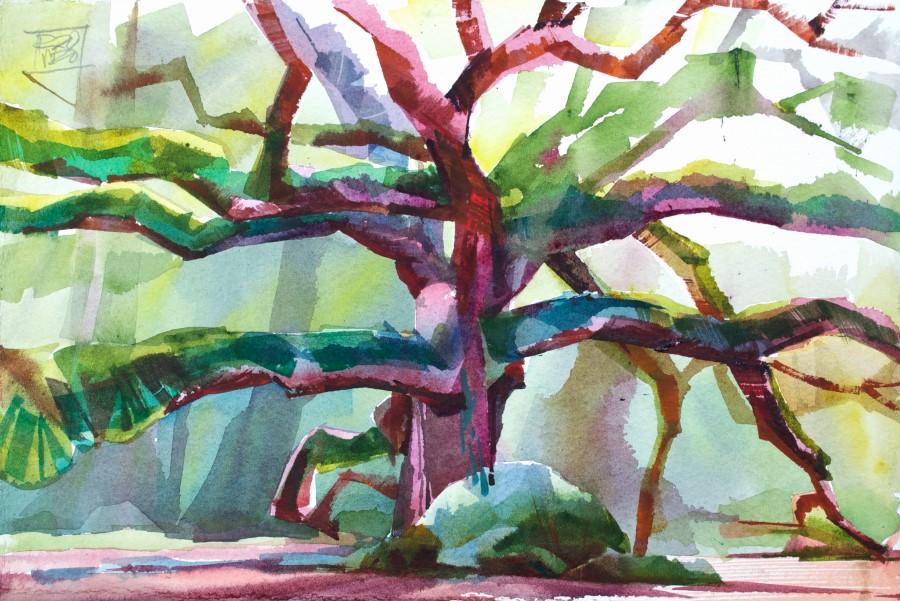Trees are hard to ignore. They have played many roles in our lives, from the trees we climbed as kids to those that we plant in our yards today. Their shapes and colors can mesmerize and inspire. For my friend and artist Robin Whitfield, they have shapes and textures that cry out to be captured on a piece of canvas. Her painting of one of the majestic trees at Twelve Oaks Nature Preserve captures the magic. But do we always treat them well? Do we give them enough space to live healthy lives? And do we really value our trees?
Far too often, trees are abused by our actions, especially in our public spaces. We all want to be known as tree-friendly communities. But for the large trees that were here before we arrived, we build things too close to them. In our quest to add greenery to parking lots and along our streets, we plant them in tiny spaces, often referred to as concrete coffins, where they struggle to survive. And sadly, when they are in our way, we find a reason to cut them down. So, are trees of value to us, as healthy elements of our communities – or are they just decorations to be used when we think we need them?
These questions are at the heart of my diatribe. A careful look at the trees in our lives tells the tale. Take a tour of your community and pay attention to whether those trees you pass by are healthy. Those iconic Live Oaks we so love and promote as our “signature” tree are often relegated to isolated spaces, with their roots cut to make room for the sidewalks, roadways, and parking lots we need. Even those in our parks have their roots run over by mowers – adding more stress. Our parking lot trees are no more than decorations in a sea of asphalt. They look great when newly planted, but soon take on a haggard look, where the buzzards in a Disney movie would feel at home.
If we really want to value our trees, we need to give them the space and protection they need to thrive. Do we want parking lots with a bit of shade? Then plant trees in larger spaces that allow their roots to grow and to collect enough rain to thrive. Do we want the trees in our parks to be as healthy as they can be? Then mulch the root zone under their canopy and keep the mowers away! And do we really need to cut all the limbs from the bottom of our trees, or can we leave them alone – giving our children places to climb and explore, with a nice layer of leaves and mulch to roll in?
In practice, we spend our energies packing the hard parts of our world, like streets, parking lots, and buildings into defined pieces of real estate to maximize what we think we get from them: mostly income of some kind. Space is filled with the important parts, leaving trees and landscaping as afterthoughts – decorations that, even then, are not valued in the long run. If we really value trees, we need to make proper space for them and treat them as having value as part of the real estate. Their beauty will inspire, their shade will cut our costs of utilities, their branches will support birds and wildlife, and our communities will then become the comfortable spaces we want to visit and enjoy – just like at home.
Let us value our trees – as just as important as any of the artificial pieces and parts of our communities. They will then be impossible to ignore.




